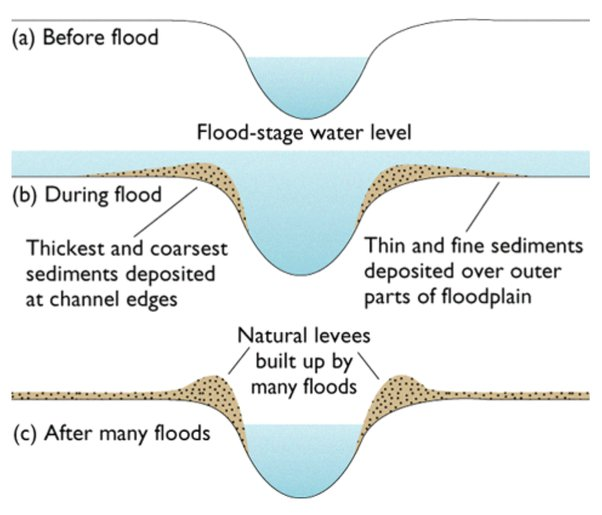River landforms
1/21
There's no tags or description
Looks like no tags are added yet.
Name | Mastery | Learn | Test | Matching | Spaced |
|---|
No study sessions yet.
22 Terms
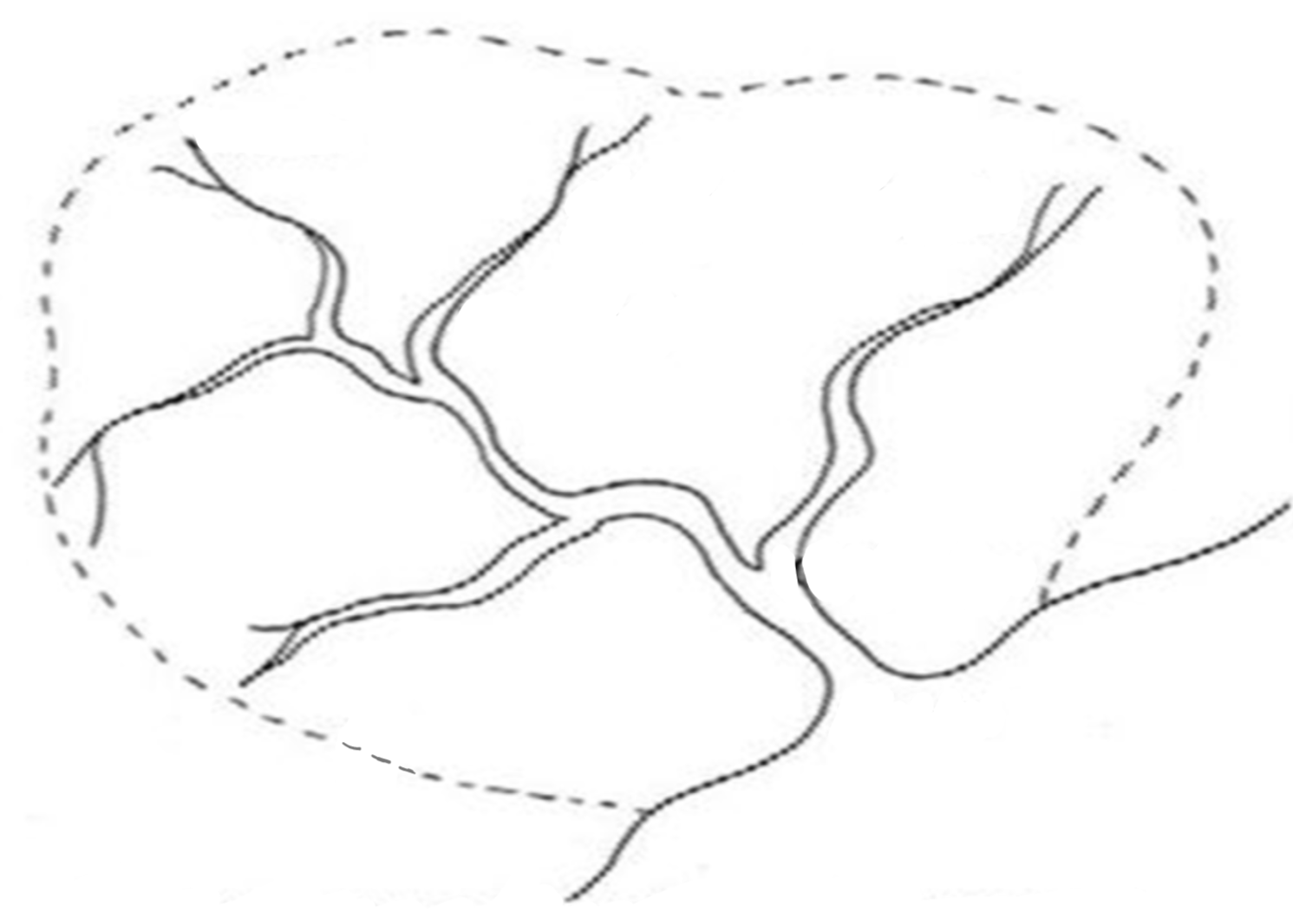
Label this drainage basin diagram
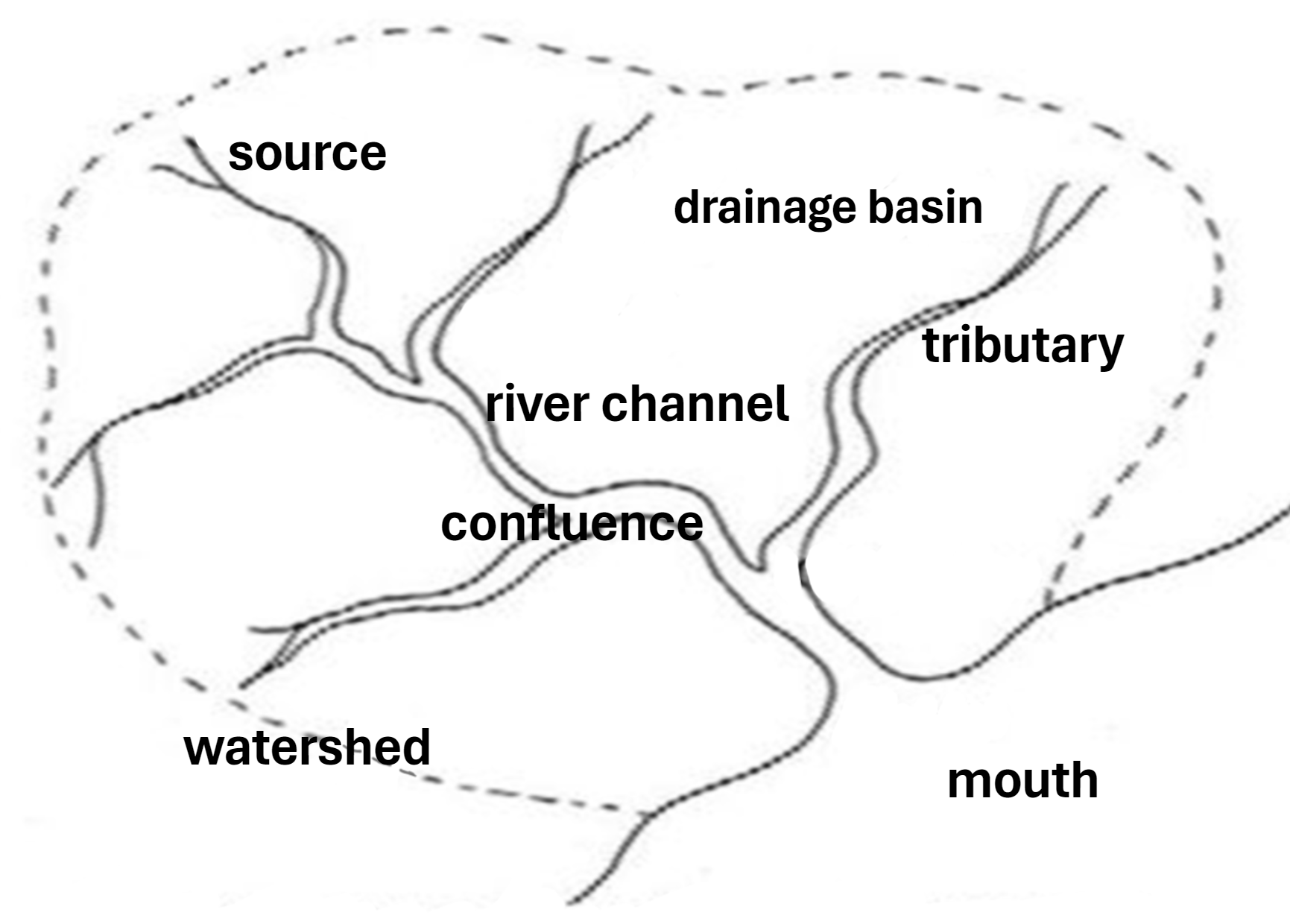
What is a drainage basin?
an area of land drained by 1 river & all its tributaries
What is the source?
where the river starts
What is the mouth?
where the river enters the sea or lake
What is the river channel?
where the river flows
What is a tributary?
a small stream that flows into a larger stream / river
What is a confluence?
where 2 tributaries join
What is a watershed?
the boundary of a drainage basin
What are the 3 stages of a river?
- the upper course
- the middle course
- the lower course
What are the defining features of the upper course?
- river is narrow & shallow
- large & angular load
- traction is the main transportation type
- low velocity & discharge
- steep gradient
- waterfalls
- v-shaped valleys
- gorges
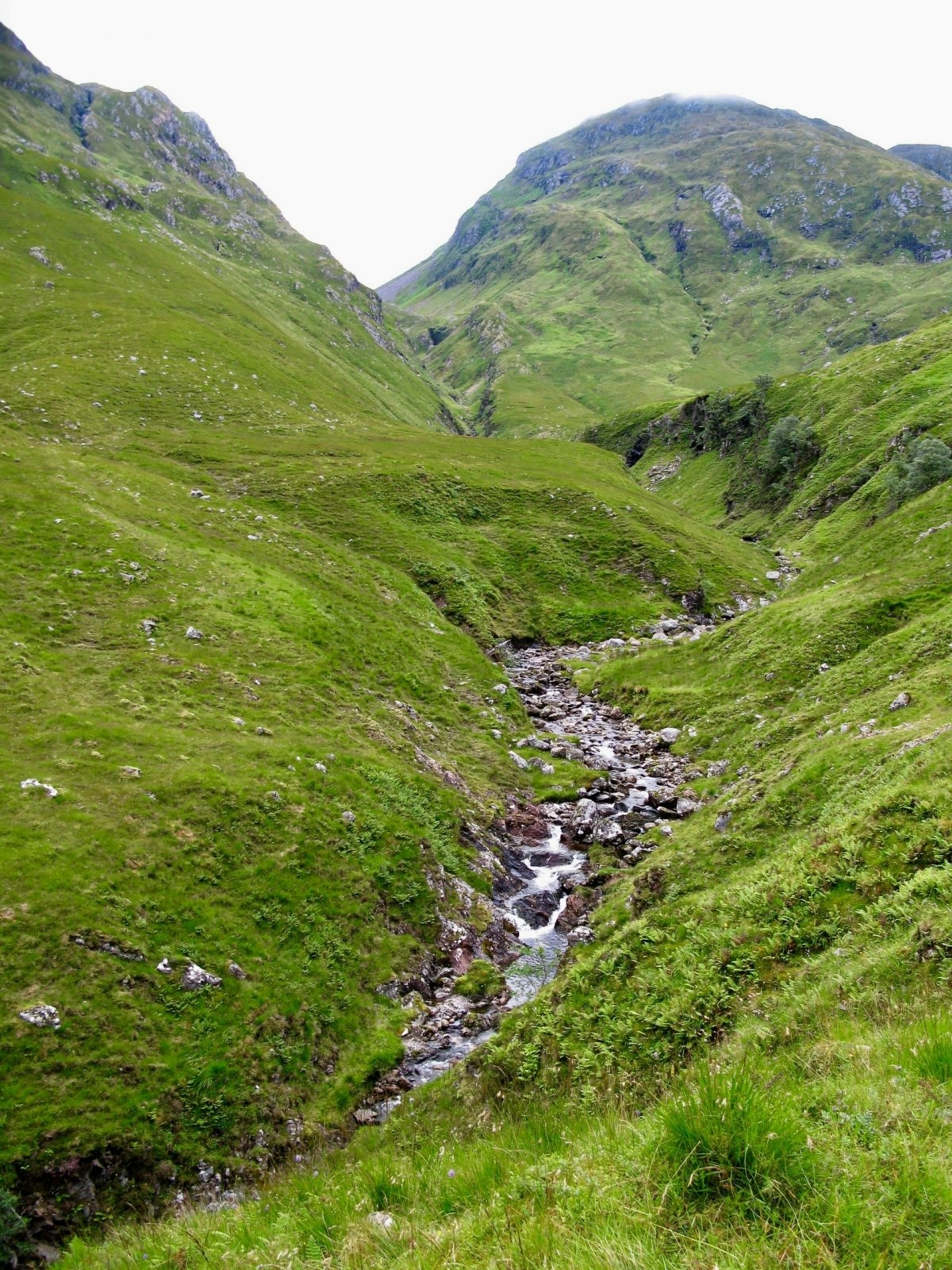
What are the defining features of the middle course?
- river is getting wider & deeper
- load is smaller & more rounded
- suspension is the main transportation type
- medium velocity & discharge
- meanders
- ox-bow lakes
- flood plains
- levees
- eyots
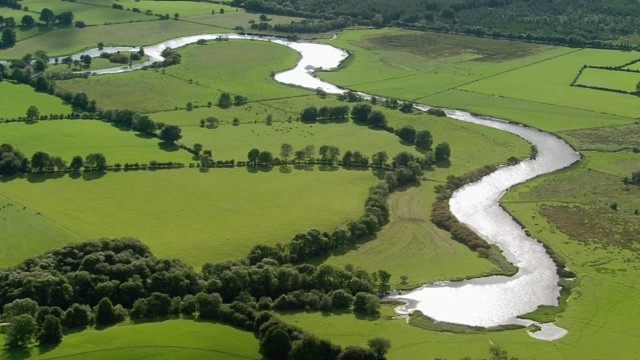
What are the defining features of the lower course?
- river is wide & deep
- fine & rounded load
- solution is the main transportation type
- high velocity & discharge
- estuaries
- more sinuous meanders
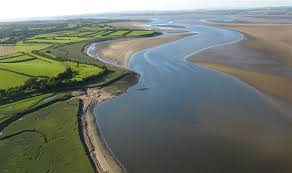
What is the long profile of a river?
a diagram showing how the channel gradient changes throughout the river’s course
How does the long profile of a river change throughout the 3 courses?
the channel gradient decreases downstream
upper course → steep gradient
middle & lower course → gently sloping gradient
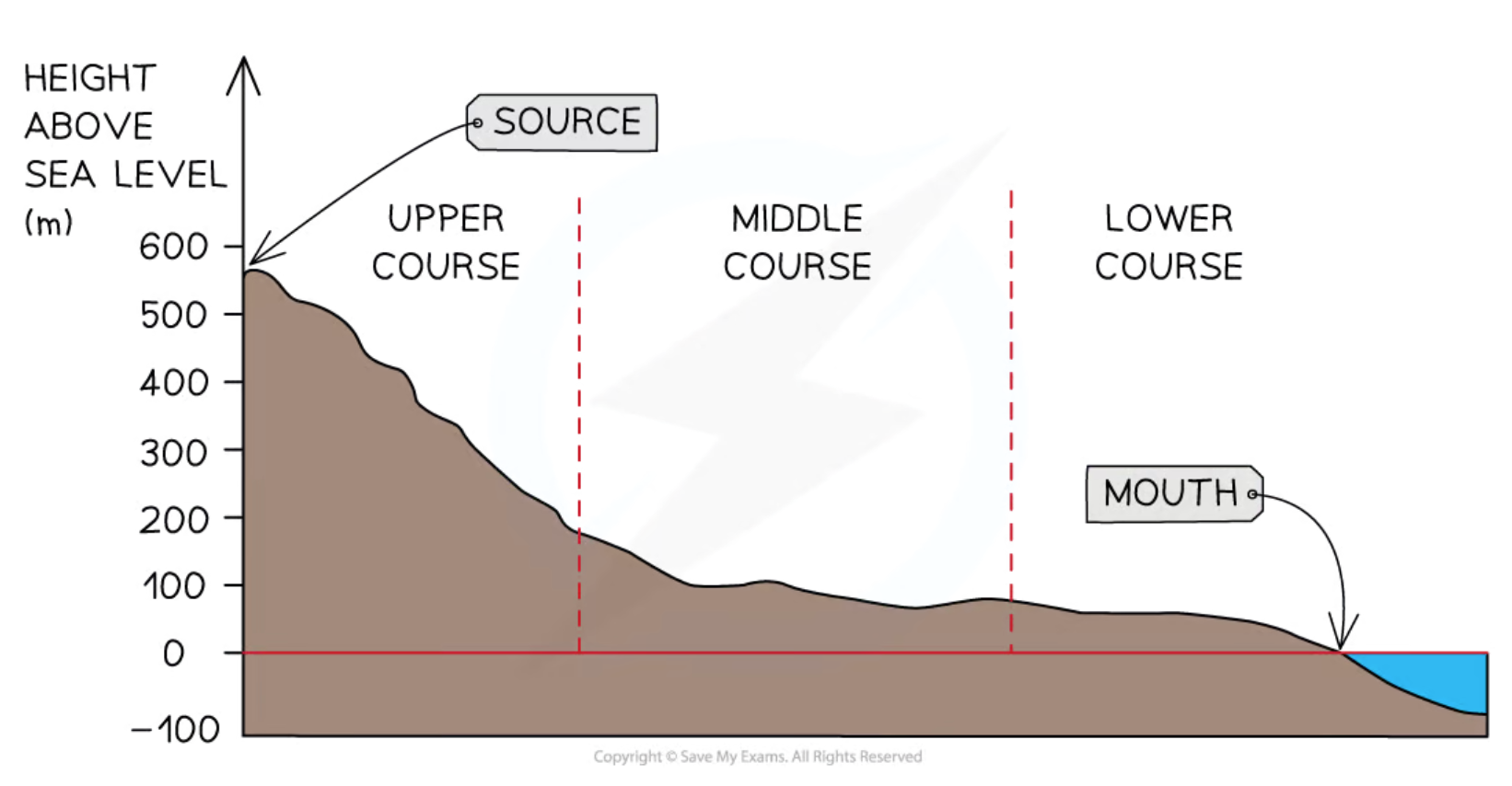
What is the cross profile of a river?
a diagram showing the cross-section of a river’s channel
How does the cross profile of a river change throughout the 3 courses?
the cross-section gets wider downstream
upper course is narrow and has a steep cross-section (v-shaped)
middle course is wider and has a flatter cross-section (u-shaped)
lower course is wide and has a flat cross-section
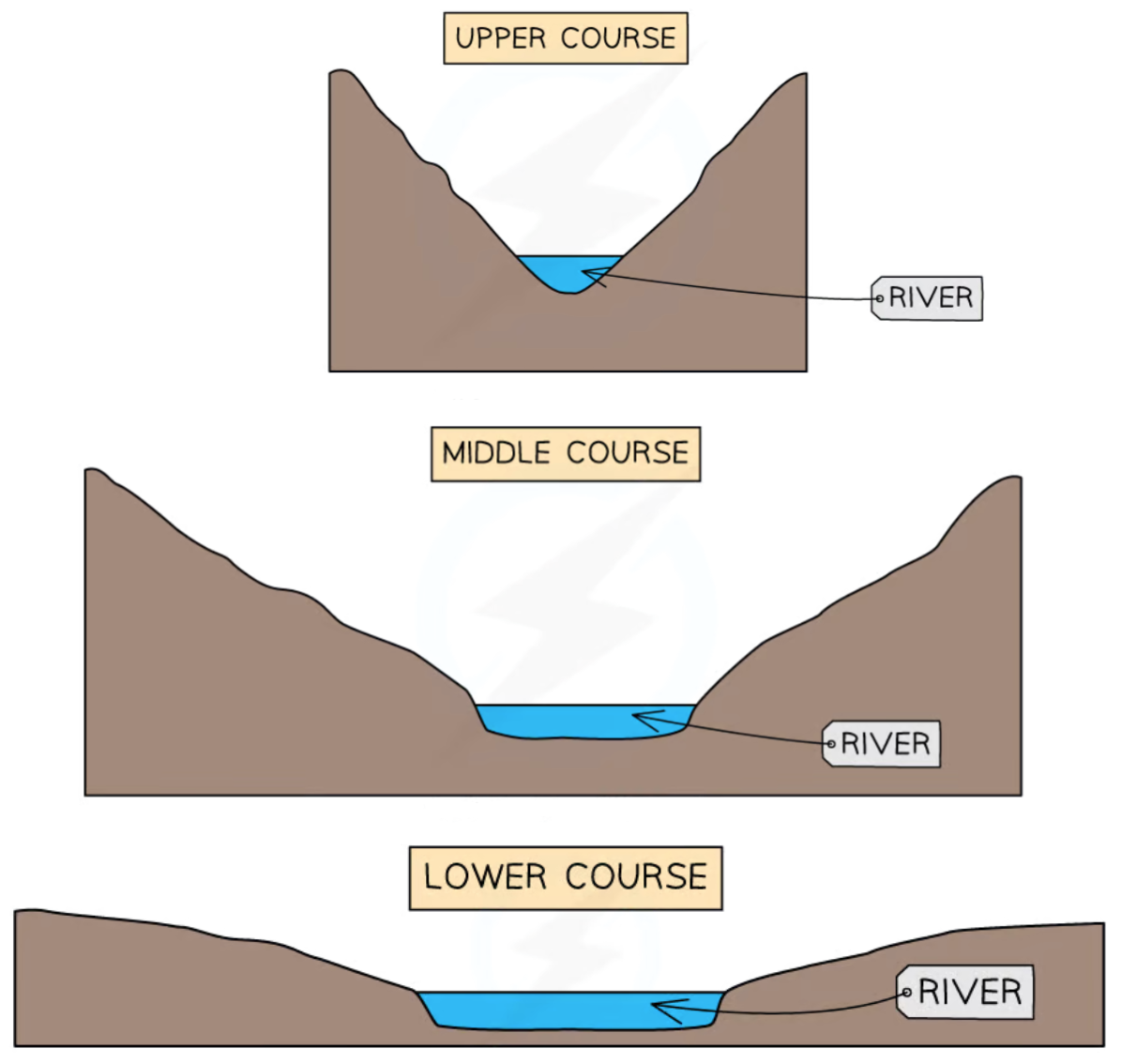
How are v-shaped valleys formed?
- as a small river rapidly flows downhill due to the steep gradient, vertical erosion occurs which creates a notch
- hydraulic action & abrasion continue erode the notch downwards by wearing away its sides
- this exposes them to freeze-thaw weathering which steepens the sides by loosening the rocks & sediment
- some of the rocks & sediment fall into the river & are then transported downstream
- this widens the river channel, creating a v-shaped valley between interlocking spurs
How are waterfalls formed?
- when water flows over a top layer of hard rock & a bottom layer of soft rock
- hydraulic action & abrasion cause the soft rock to erode away first as it is less resistant
- overtime, this creates an overhang of hard rock which eventually collapses into the plunge pool due to lack of support
- the plunge pool is deepened by rocks rubbing against each other (abrasion)
- As the water falls over the lip, more of the rock is eroded by hydraulic action and corrasion
- gradually, the waterfall retreats up the river, leaving a steep-sided gorge
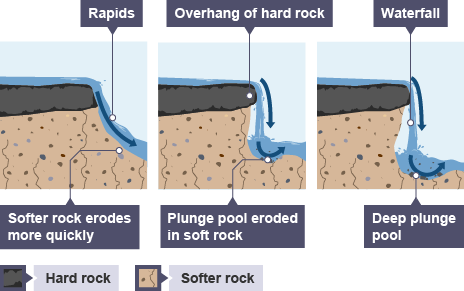
How are meanders formed?
- on the outer bend of a river, the water flows faster & therefore has more energy
- this causes processes such as hydraulic action to erode the river bank, creating a river cliff
- on the inner bend, the water flows slower & has less energy
- this causes deposition to occur which creates slip-off-slopes
- these 2 processes work together to make the river channel more bendy, creating meanders
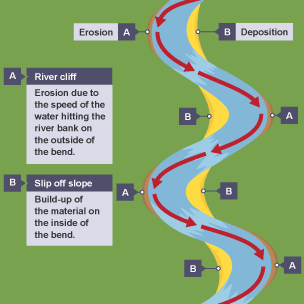
How are ox-bow lakes formed?
- when the outer bend of a meander is gradually being eroded, it gets closer to another outer bend, forming a narrow neck
- eventually the neck cuts through & joins together, causing the water to flow through the new quickest route
- deposition takes places to seal off the old meander from the new straighter river channel, leaving behind an ox-bow lake
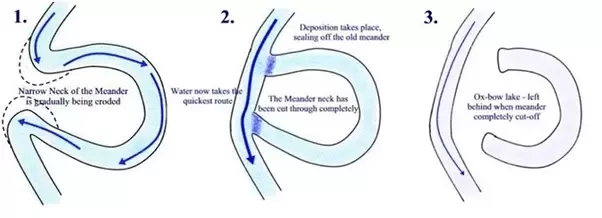
How are floodplains formed?
- when a river floods, the water moves out onto the flat land surrounding it
- this decreases the rivers energy which therefore causes the sediment it is transporting to be deposited onto the flooded land, creating a floodplain
- overtime, the floodplain gets wider due to meander migration
- this is because the deposition that occurs on the inner bends of meanders builds up the floodplain
How are levees formed?
- during a flood, the river loses energy which causes the transported material to be deposited
- the larger sediment is deposited first at the channel edges & the finer sediment is deposited last at the outer parts of the floodplain
- after many floods, this builds up a raised ridge on the river bank - this is a levee
